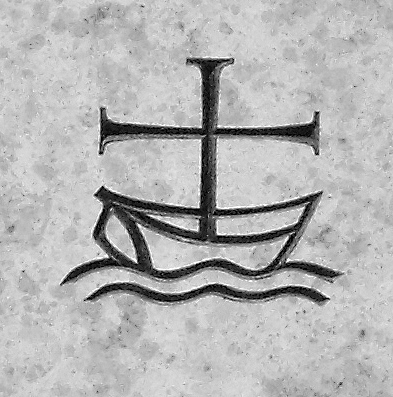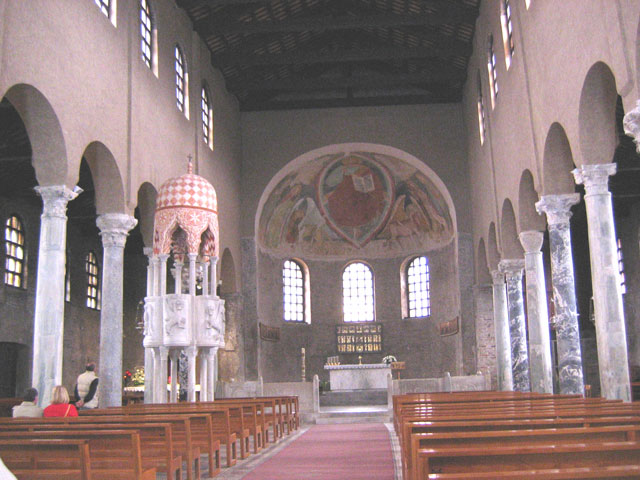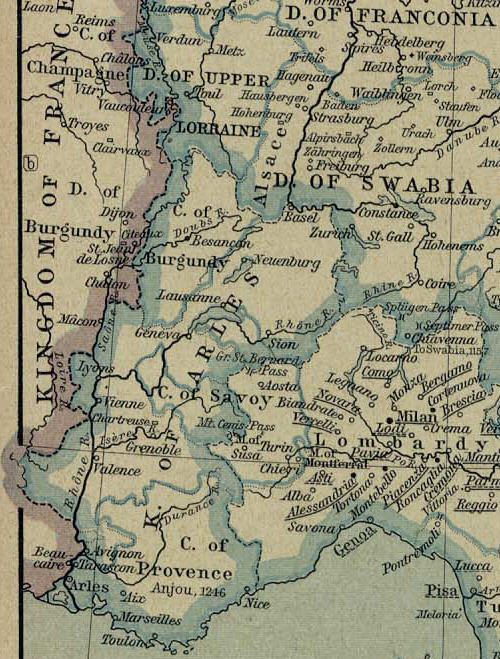|
Pope John XIX
Pope John XIX ( la, Ioannes XIX; died October 1032), born Romanus, was the bishop of Rome and ruler of the Papal States from 1024 to his death. He belonged to the family of the powerful counts of Tusculum, succeeding his brother, Benedict VIII. Papal relations with the Patriarchate of Constantinople soured during John XIX's pontificate. He was a supporter of Emperor Conrad II and patron of the musician Guido of Arezzo. Family Romanus was born in Rome. He was the third son of Count Gregory I of Tusculum and his wife, Mary. During the pontificate of his brother, Benedict VIII, Romanus held the temporal power in the city as consul and senator. Upon the death of Benedict, Romanus, a layman, was elected to succeed him. He was immediately ordained in all the orders in succession, and consecrated bishop in order to enable him to ascend the papal chair. He took the name of John. [...More Info...] [...Related Items...] OR: [Wikipedia] [Google] [Baidu] |
Bishop Of Rome
A bishop is an ordained clergy member who is entrusted with a position of authority and oversight in a religious institution. In Christianity, bishops are normally responsible for the governance of dioceses. The role or office of bishop is called episcopacy. Organizationally, several Christian denominations utilize ecclesiastical structures that call for the position of bishops, while other denominations have dispensed with this office, seeing it as a symbol of power. Bishops have also exercised political authority. Traditionally, bishops claim apostolic succession, a direct historical lineage dating back to the original Twelve Apostles or Saint Paul. The bishops are by doctrine understood as those who possess the full priesthood given by Jesus Christ, and therefore may ordain other clergy, including other bishops. A person ordained as a deacon, priest (i.e. presbyter), and then bishop is understood to hold the fullness of the ministerial priesthood, given responsibility b ... [...More Info...] [...Related Items...] OR: [Wikipedia] [Google] [Baidu] |
Ecumenical
Ecumenism (), also spelled oecumenism, is the concept and principle that Christians who belong to different Christian denominations should work together to develop closer relationships among their churches and promote Christian unity. The adjective ''ecumenical'' is thus applied to any initiative that encourages greater cooperation and union among Christian denominations and churches. The fact that all Christians belonging to mainstream Christian denominations profess faith in Jesus as Lord and Saviour over a believer's life, believe that the Bible is the infallible, inerrant and inspired word of God (John 1:1), and receive baptism according to the Trinitarian formula is seen as being a basis for ecumenism and its goal of Christian unity. Ecumenists cite John 17:20-23 as the biblical grounds of striving for church unity, in which Jesus prays that Christians "may all be one" in order "that the world may know" and believe the Gospel message. In 1920, the Ecumenical Patriarch ... [...More Info...] [...Related Items...] OR: [Wikipedia] [Google] [Baidu] |
Latin Rite
Latin liturgical rites, or Western liturgical rites, are Catholic rites of public worship employed by the Latin Church, the largest particular church ''sui iuris'' of the Catholic Church, that originated in Europe where the Latin language once dominated. Its language is now known as Ecclesiastical Latin. The most used rite is the Roman Rite. The Latin rites were for many centuries no less numerous than the liturgical rites of the Eastern Catholic Churches, Eastern autonomous particular churches. Their number is now much reduced. In the aftermath of the Council of Trent, in 1568 and 1570 Pope Pius V suppressed the breviary, breviaries and missals that could not be shown to have an antiquity of at least two centuries (see Tridentine Mass and Roman Missal). Many local rites that remained legitimate even after this decree were abandoned voluntarily, especially in the 19th century. In the second half of the 20th century, most of the religious orders that had a distinct liturgical rit ... [...More Info...] [...Related Items...] OR: [Wikipedia] [Google] [Baidu] |
Byzantine Rite
The Byzantine Rite, also known as the Greek Rite or the Rite of Constantinople, identifies the wide range of cultural, liturgical, and canonical practices that developed in the Eastern Christianity, Eastern Christian Church of Constantinople. The canonical hours are very long and complicated, lasting about eight hours (longer during Great Lent) but are abridged outside of large Monastery, monasteries. An iconostasis, a partition covered with icons, separates Sanctuary#Sanctuary as area around the altar, the area around the altar from the nave. The Sign of the cross#Eastern Orthodoxy, sign of the cross, accompanied by bowing, is made very frequently, e.g., more than a hundred times during the Divine Liturgy#Byzantine Rite, divine liturgy, and there is prominent veneration of icons, a general acceptance of the congregants freely moving within the church and interacting with each other, and distinctive traditions of liturgical chanting. Some traditional practices are falling out of ... [...More Info...] [...Related Items...] OR: [Wikipedia] [Google] [Baidu] |
Byzantius Of Bari
Byzantius (died 1035) was the archbishop of Bari in the early eleventh century. He began the construction of the new cathedral, which was continued by his successors. In 1025, the Byzantine catepan of Italy, Basil Boioannes, reorganised the structure of the catepanate and, at the request of Byzantius, authorised the reattachment of Bari to the see of Rome. In order to raise his diocese to provincial status and retain his archiepiscopal title, Byzantius received, in accordance with Roman interpretation of Pseudo-Isidore, a bull of Pope John XIX Pope John XIX ( la, Ioannes XIX; died October 1032), born Romanus, was the bishop of Rome and ruler of the Papal States from 1024 to his death. He belonged to the family of the powerful counts of Tusculum, succeeding his brother, Benedict VIII ... granting him the privilege of appointing the requisite twelve suffragan bishops of a provincial archdiocese. The only known appointment he made, however, was of one Andrew to a new see at C ... [...More Info...] [...Related Items...] OR: [Wikipedia] [Google] [Baidu] |
Poppo Of Aquileia
Poppo of Treffen (also Wolfgang) was the fifty-seventh patriarch of Aquileia from 1019 to 1045. In 1020, Poppo commanded the smallest of three armies which Emperor Henry II (who had appointed him as patriarch) led through Italy. Poppo followed the Apennines and joined the other divisions to besiege Troia, the new fortress of the Byzantine catepan Basil Boioannes. The siege failed and all parties returned home. In 1027, Poppo entered and sacked Grado, the rival patriarchate of northern Italy. Poppo's reign appeared to see the ultimate victory for Aquileia. On 6 April, Pope John XIX held a Lateran synod in which he declared for Aquileia, giving its bishop the patriarchal dignity and putting the bishop of Grado under his jurisdiction. The patriarch took precedence over all Italian bishops, in fact. In 1029, John revoked his decision and reaffirmed all the dignities of Grado. Poppo later consecrated the new large cathedral at Aquileia in dedication to the Virgin Mary on 13 July 1031 ... [...More Info...] [...Related Items...] OR: [Wikipedia] [Google] [Baidu] |
Patriarch Of Grado
This is a list of the Patriarchs of Grado (north-eastern Italy). ''''. David M. Cheney. Retrieved September 25, 2016"Patriarchal See of Grado" ''GCatholic.org''. Gabriel Chow. Retrieved September 25, 2016 The patriarchate came into being when the schismatic , [...More Info...] [...Related Items...] OR: [Wikipedia] [Google] [Baidu] |
Patriarch Of Aquileia
The highest-ranking bishops in Eastern Orthodoxy, Oriental Orthodoxy, the Catholic Church (above major archbishop and primate (bishop), primate), the Hussite Church, Church of the East, and some Independent Catholicism, Independent Catholic Churches are termed patriarchs (and in certain cases also ''Pope (word), popes'' – such as the Pope of Rome or Pope of Alexandria, and ''catholicos, catholicoi'' – such as Catholicos Karekin II). The word is derived from Greek language, Greek πατριάρχης (''patriarchēs''), meaning "chief or father of a family", a compound of πατριά (''patria''), meaning "family", and ἄρχειν (''archein''), meaning "to rule". Originally, a ''patriarch'' was a man who exercised Autocracy, autocratic authority as a pater familias over an extended family. The system of such rule of families by senior males is termed patriarchy. Historically, a patriarch has often been the logical choice to act as ethnarch of the community identified with ... [...More Info...] [...Related Items...] OR: [Wikipedia] [Google] [Baidu] |
Bolesław I The Brave
Bolesław I the Brave ; cs, Boleslav Chrabrý; la, Boleslaus I rex Poloniae (17 June 1025), less often known as Bolesław the Great, was Duke of Poland from 992 to 1025, and the first King of Poland in 1025. He was also Duke of Bohemia between 1003 and 1004 as Boleslaus IV. A member of the ancient Piast dynasty, Bolesław was a capable monarch and a strong mediator in Central European affairs. He continued to proselytise Western Christianity among his subjects and raised Poland to the rank of a kingdom, thus becoming the first Polish ruler to hold the title of ''rex'', Latin for king. The son of Mieszko I of Poland by his first wife Dobrawa of Bohemia, Bolesław ruled Lesser Poland already during the final years of Mieszko's reign. When the country became divided in 992, he banished his father's last consort, Oda of Haldensleben, purged his half-brothers along with their adherents and successfully reunified Poland by 995. As a devout Christian, Bolesław supported the mis ... [...More Info...] [...Related Items...] OR: [Wikipedia] [Google] [Baidu] |
Poland
Poland, officially the Republic of Poland, is a country in Central Europe. It is divided into 16 administrative provinces called voivodeships, covering an area of . Poland has a population of over 38 million and is the fifth-most populous member state of the European Union. Warsaw is the nation's capital and largest metropolis. Other major cities include Kraków, Wrocław, Łódź, Poznań, Gdańsk, and Szczecin. Poland has a temperate transitional climate and its territory traverses the Central European Plain, extending from Baltic Sea in the north to Sudeten and Carpathian Mountains in the south. The longest Polish river is the Vistula, and Poland's highest point is Mount Rysy, situated in the Tatra mountain range of the Carpathians. The country is bordered by Lithuania and Russia to the northeast, Belarus and Ukraine to the east, Slovakia and the Czech Republic to the south, and Germany to the west. It also shares maritime boundaries with Denmark and Sweden. ... [...More Info...] [...Related Items...] OR: [Wikipedia] [Google] [Baidu] |
Cnut The Great
Cnut (; ang, Cnut cyning; non, Knútr inn ríki ; or , no, Knut den mektige, sv, Knut den Store. died 12 November 1035), also known as Cnut the Great and Canute, was King of England from 1016, King of Denmark from 1018, and King of Norway from 1028 until his death in 1035. The three kingdoms united under Cnut's rule are referred to together as the North Sea Empire. As a Danish prince, Cnut won the throne of England in 1016 in the wake of centuries of Viking activity in northwestern Europe. His later accession to the Danish throne in 1018 brought the crowns of England and Denmark together. Cnut sought to keep this power-base by uniting Danes and English under cultural bonds of wealth and custom. After a decade of conflict with opponents in Scandinavia, Cnut claimed the crown of Norway in Trondheim in 1028. The Swedish city Sigtuna was held by Cnut (he had coins struck there that called him king, but there is no narrative record of his occupation). In 1031, Malcolm II of S ... [...More Info...] [...Related Items...] OR: [Wikipedia] [Google] [Baidu] |
Rudolph III Of Burgundy
Rudolph III (french: Rodolphe, german: Rudolf; – 6 September 1032), called the Idle or the Pious, was the king of Burgundy from 993 until his death. He was the last ruler of an independent Kingdom of Burgundy, and the last male member of the Burgundian group of the Elder House of Welf. Family Rudolph was the son and heir of King Conrad I of Burgundy (925–993). His mother Matilda (943–980), a member of the Frankish Carolingian dynasty, was the daughter of King Louis IV of France. Rudolph himself had three sisters: Gerberga, who married Duke Herman II of Swabia about 988, Bertha, married to Count Odo I of Blois and secondly to King Robert II of France in 996, and Gisela, who married the Ottonian duke Henry II of Bavaria and became the mother of Emperor Henry II. Reign Rudolph succeeded to the Burgundian throne upon his father's death on 19 October 993 and was crowned king in Lausanne. His reign was marked with turbulence when he made attempts to confiscate several Burgun ... [...More Info...] [...Related Items...] OR: [Wikipedia] [Google] [Baidu] |




